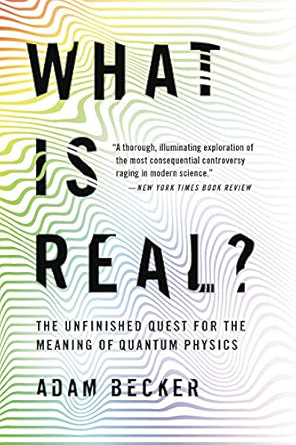More on this book
Community
Kindle Notes & Highlights
by
Adam Becker
Started reading
October 11, 2024
Operation Alsos,
capture and interrogate the German nucle...
This highlight has been truncated due to consecutive passage length restrictions.
Farm Hall, quietly took Otto Hahn aside and told him that the Americans had dropped an atomic bomb
He told me that he had originally contemplated suicide when he realized the terrible potentialities of his discovery.…
the Nazi bomb program, unlike the Manhattan Project, was a disorganized mess, with vital information compartmentalized and no clear vision of how to proceed.
the Germans, had deliberately pursued only a nuclear reactor, being unwilling to build a massive new weapon for Hitler’s Reich—thereby placing the responsibility for their failure on their supposed moral clarity, rather than their sheer incompetence.
Finally, in October 1943, the SS arrived in the streets of Copenhagen.
Denmark’s Jewish community days earlier, and most of the country’s Jews had gone into hiding by the time the SS arrived.
More than 7,000 Jews—95 percent of the Jews that lived in Denmark at the time—managed to evade the Nazis.
decided that Bohr himself was too important to remain in Sweden anyhow.
After a briefing in England, Bohr flew to the United States, where he was whisked to the headquarters of the Manhattan Project in Los Alamos,
“But before I could open my mouth, [Bohr] said, ‘You see, I told you it couldn’t be done without turning the whole country into a factory. You have done just that.’”
Manhattan Project had cost the nation nearly $25 billion, employing 125,000 people at thirty-one different locations across the United States and Canada.
After the war ended, physics research in the United States never returned to what it was before the war.
military research dollars poured into physics.
Less than a decade after the war, in 1953, physics research funding was just shy of $400 million—an increase by a factor of twenty-five in just fifteen years. And, by 1954, 98 percent of the money for basic research in the physical sciences in the United States was coming from the military or defense-oriented government agencies, like the Atomic Energy Commission, successor to the Manhattan Project.
young veterans, funded by the GI Bill, flocked to universities to learn about the new physics.
Physics departments were inundated with students. In 1941, about 170 US graduate students earned their PhDs in physics.
Educating physicists was no longer seen as a matter of mere scientific necessity but an essential investment in military infrastructure.
former chair of the Princeton Physics Department, spoke of the “stockpiling and rationing of scientific manpower” in an address to the American Association for the Advancement of Science in 1950.
“We physicists are among the maladjusted veterans of the Second World War.”
Less than a decade after the end of the war, the flood of people and money had radically altered the day-to-day work of physics:
He had also done work on radar at MIT
consulted for the Royal Air Force.
Goudsmit remained uneasy about the changes in his field. “The conditions we work under today certainly aren’t hastening [a] breakthrough,” he said in 1953.
Research into the meaning of quantum physics was one of the casualties of the war.
philosophical questions at the foundations of quantum physics.
spent a great deal of time on conceptual issues.
detailed discussion of philosophy became all but impossible.
The larger classes focused on “efficient, repeatable means of calculation,” rather than focusing on foundations.
atavistic
era of Big Science had arrived—and it had no patience for puzzling over the meaning of quantum physics.
Heisenberg’s story was a fabrication.
Despite Heisenberg’s public-relations campaign, there was a cloud of suspicion over his head for the rest of his days.
Bohr and Heisenberg did speak again and even met several times after the war.
Heisenberg’s invention of a single unified Copenhagen interpretation may have been an attempt to rework the history of quantum physics to his benefit.
Yet the idea of a single settled interpretation of quantum physics, associated with the giants Bohr and Heisenberg, went over well in the post-Manhattan world of Big Science.
The mathematical formalism of the theory continued to work remarkably well in a wide variety of postwar applications of physics to the military-industrial complex,
the development of the silicon transistor, as well as many of the other materials later responsible for the shrinking size and ballooning importance of computers).
The Copenhagen interpretation’s promise of a complete yet obscure answer to the quantum mysteries allowed the new army of postwar physicists to calculate answers without worrying about the meaning of the theory.
in contrast to the great theorists of Europe, physicists in the States had always had an experimental and pragmatic bent.
But not all American physicists were pragmatic enough to swallow the Copenhagen interpretation.
legislates a difficulty into a norm.”
1947, David Bohm arrived at Princeton, a freshly minted assistant professor.
Within five years, those doubts ballooned into a full-scale personal rebellion against the quantum orthodoxy.
about to do the impossible:
change quantum physics forever.
Dresden was a physicist at the University of Kansas,
fascinating new work by David Bohm.
Bohm had discovered a totally new way to interpret quantum physics.


